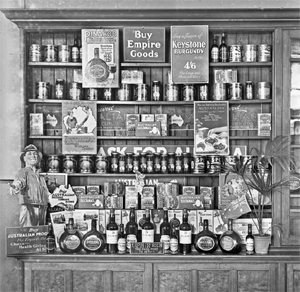| |
Another Face of
Leyland
by Michael Plunkett
(Torque 71)
Here and there, sandwiched between the thousands of
glass plates in the Leyland Photographic Archive
depicting all those highly varnished lorries and
buses posed prior to delivery, there are scenes
showing people, places and events, relevant at the
time but which may now seem of little interest in
the context of Leyland vehicle design and
development. Not So! These plates provide a unique
picture of “Leyland” during the formative inter-war
years; waist-coated management, clothcapped
workforce, local events and views of bleak,
stone-set paved urban streets, small corner shops
beneath factory walls, all caught in the forty
shades of grey (or sepia) defined by black and white
photography.
These images are as valuable as those in the better
known Hulton and other collections recording Social
History, so to give them an airing it is proposed to
reproduce one in each forthcoming issue of “Torque”
with a brief caption to explain the relevance to the
Leyland “World” as it really was at the time.
 |
|
Produce from Australia, on
display in the Leyland Canteen building in
Thurston Road, Leyland, in July 1928. (BCVMT
L005142)
|
| |
|
|
 |
|
“Buy Australian Produce”
posters were displayed in the windows of new
buses
being delivered from
Leyland. These two were a Titan, possibly
bound for Sydney,
and an LT1 Lion for Scottish Motor
Traction in July 1929. (BCVMT L006520)
|
“Torque” has recently featured the
export of Titan TD1 double deckers to Australia
between 1929 and 1931 so it seems appropriate to
continue the Ozy theme as an introduction to the
proposed series of Archive photos. Indeed the
Australian economy was in need of stimulation during
the 1920s and much effort was made to promote their
exports; not only lamb and wool but tinned and dried
fruits and wine – so called Australian Burgundy!
Leyland Management had always seen
the Commonwealth, Canada, South Africa, India,
Australia and New Zealand (as well as South America)
as a potential expanding market and has successfully
exported Trucks mostly of the heavy “subsidy” type,
well suited to work in the tough conditions of
climate and terrain with scant servicing available.
But, they had failed to respond to repeated
enquiries for smaller capacity, less expensively
engineered vehicles such as were being strenuously
promoted by American and other manufacturers,
offering favourable financial deals and fast
delivery. Only the Leyland Cub was eventually aimed
at this market but it still could not compete with
the simpler, cheaper models typified by Morris
Commercial of Bedford.
However, the first generation Lion
and Lioness had found overseas customers, notably
South Africa and in small numbers elsewhere but,
encouraged by the immediate success of Rackham’s
Tiger and Titan on the Home Market, Leyland renewed
and diversified its publicity for the new passenger
models, especially with regard to Canada and
Australia, including featuring displays of
Commonwealth products as may be seen (profusely!) in
the first of these Archive Photographs.
|
Join the discussions on
|
 |
|
|